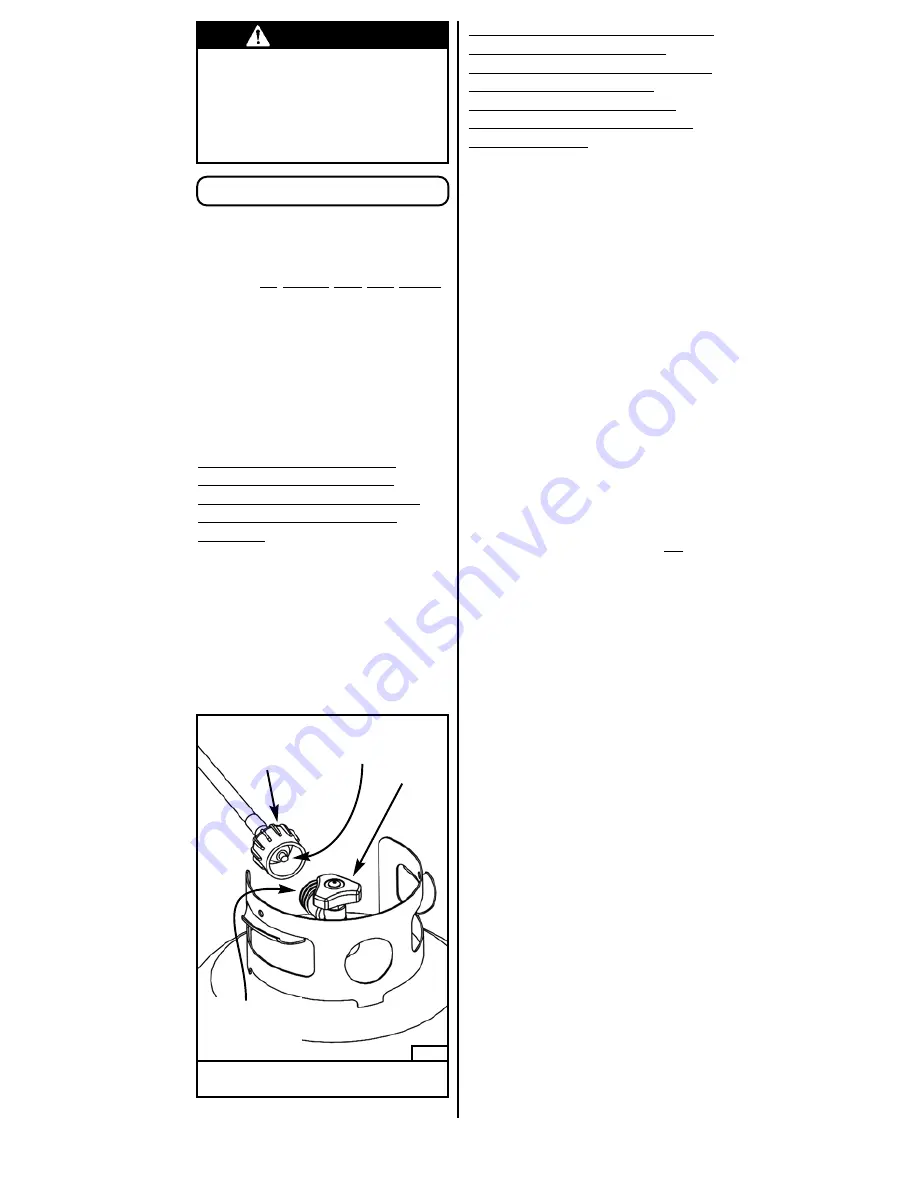
TYPE 1 CONNECTION
English-12
YOUR NEW GAS STOVE IS
EQUIPPED WITH A TYPE 1
CONNECTION DEVICE WHICH
HAS 3 SAFETY FEATURES
(FIG. 32):
1. Proof of gas seal between the connector
and the cylinder before gas flow takes
place.
2. A flow-limiting device designed to limit the
flow of gas in the event of a regulator or
hose failure.
3. The connection has a thermal shut-off
which will stop the flow of gas if the
connection reaches a certain temperature.
Current refillable L.P. gas
cylinders are fitted with an
Overfill Protection Device
(O.P.D.). To insure that you retain
this safety-device, take your
cylinder to an L.P. gas service
station for filling, or when
exchanging your cylinder at a
cylinder exchange station,
request that your replacement
cylinder be fitted with the O.P.D.
feature.
DANGER
If a fire occurs at the cylinder valve,
DO
NOT
attempt to move the cylinder.
IMMEDIATELY
call the fire department
and clear the area. You can safely spray
water with a garden hose from a distance
of at least 15 feet away from cylinder until
firemen arrive.
For Your Additional Safety
Fig. 32
Thermal
Sensitive
Handwheel
1-5/16"
Acme Connection
Nipple with
Excess Flow
Valve
CURRENT GAS CYLINDERS ARE
ALSO EQUIPPED WITH AN
OVERFILL PROTECTION DEVICE
(O.P.D.) WHICH GREATLY
REDUCES THE CHANCE OF
ACCIDENTALLY OVERFILLING
THE CYLINDER.
SPECIAL NOTE CONCERNING L.P. GAS
CYLINDERS:
It is important to insure that your gas
cylinder is properly purged before it is
filled. If you purchase a new cylinder,
please inform your propane gas dealer
that this is a new cylinder and needs to be
properly purged before being filled.
SPECIAL NOTE CONCERNING
TYPE 1 CONNECTION DEVICES:
If you notice very small flames on the
burner(s), you may have accidentally
activated the flow-limiting device in the
Type 1 connection device. Besides a
rupture in the gas hose, the flow-limiting
device may activate for one of the two
following reasons:
1. Opening the burner valves before opening
the cylinder valve.
SOLUTION:
Shut off the burner valves
and the L.P cylinder valve and open in the
proper order:
a). Open the L.P. cylinder valve first, then
b). Open burner valve and ignite the
burner according to the instructions in
this manual for your stove.
IF YOU STILL HAVE A PROBLEM,
THEN THERE MAY BE AIR IN THE
CYLINDER DUE TO IMPROPER
PURGING.
2. The L.P. cylinder was not properly purged
before it was filled.
SOLUTION:
See your L.P. gas supplier.


































